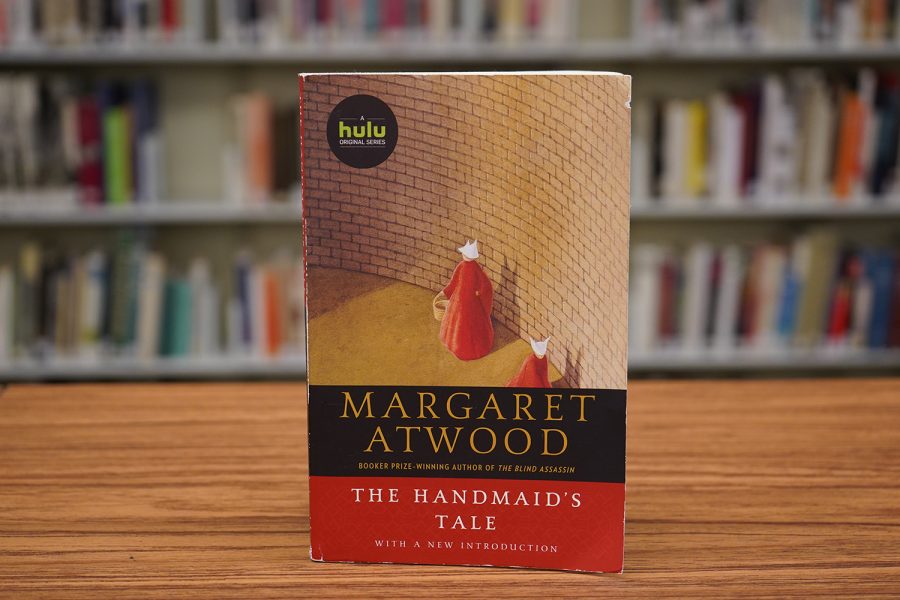Book Review: The Handmaid’s Tale
The Handmaid’s Tale, a dystopian story about the future of politics, is a captivating story that is worth the read.
November 1, 2019
What would happen if virtually all of our Constitutional rights were taken away? Or if women were forbidden to read and write? What if every waking minute of our lives was monitored by the government? If social media and cell phones were banned completely?
These hypotheticals all occur in the fictional Republic of Gilead. In Margaret Atwood’s novel The Handmaid’s Tale, the Republic of Gilead, also called the Divine Republic, is a nation of the future of the Americas. Gilead’s government is a totalitarian, neo-Puritanical regime that operates in pursuit of forging ‘a better world.’ But it’s not better for most people, especially women. Women in Gilead are seen as second-class citizens, and must submit to men at all times. They can’t participate in any sort of government, get an education, hold property, or have a career. In addition, all women are strictly prohibited from reading and consuming any sort of media in general.
The Handmaid’s Tale is told in first-person perspective by a handmaid named Offred. Handmaid is a term used for sex slaves placed in the homes of high-ranking government commanders with the sole task of breeding and producing as many children as possible.
In this future world, climate change and exposure to toxic and radioactive chemicals has inflicted infertility on most of the population. Only select women are still fertile, and they are made into Handmaids for the purpose of repopulating the country– Offred being one of them.
Women who are infertile are assigned much less favorable positions. Martha’s are domestic servants who cook and clean for their Commander’s house. Econowives are married women who’s husbands rank lower than the commander positions. The lowest position in the class system of Gilead is the Unwoman. Among the Unwomen are sterile women, unmarried and widowed women, human rights activists, feminists, lesbians or any woman of LGBT identity, nuns, failed handmaids, foreigners, and protesters.
Offred’s name isn’t really Offred; it’s actually June. Her name was forcibly changed to resemble that of her master, Fred Waterford. Each Handmaid is named in accordance with the Commander they are assigned to. Their old names, along with their old lives, are extremely forbidden to mention. Each day, Offred dons a modest outfit with a red suit and a white bonnet, which covers her face.
Her responsibilities are simple: each day she goes to the market, where she is watched like a hawk by Guardians (guards) and Eyes (spies), who scan for any irregular conduct. Anyone who behaves against the laws of Gilead is harshly punished: no reading, no outside religion, and most definitely no conspiracies. Once a month, Offred must lie on her back and hope the Commander gets her pregnant, as that is all she is seen as useful for.
This best-selling novel was recently made into a television show on Hulu. I highly suggest you consider reading this book if you were a big Divergent or Hunger Games fan as a kid, like I was. The Handmaid’s Tale is written in a similar fashion, but reads like a more mature version.
All in all, The Handmaid’s Tale novel ingeniously and poetically brings light to some of the deeper connections between sex and politics. The underlying themes are relevant to today’s issues, considering its mention of climate change. I found it impossible to put down, and I’d recommend it to everyone.













